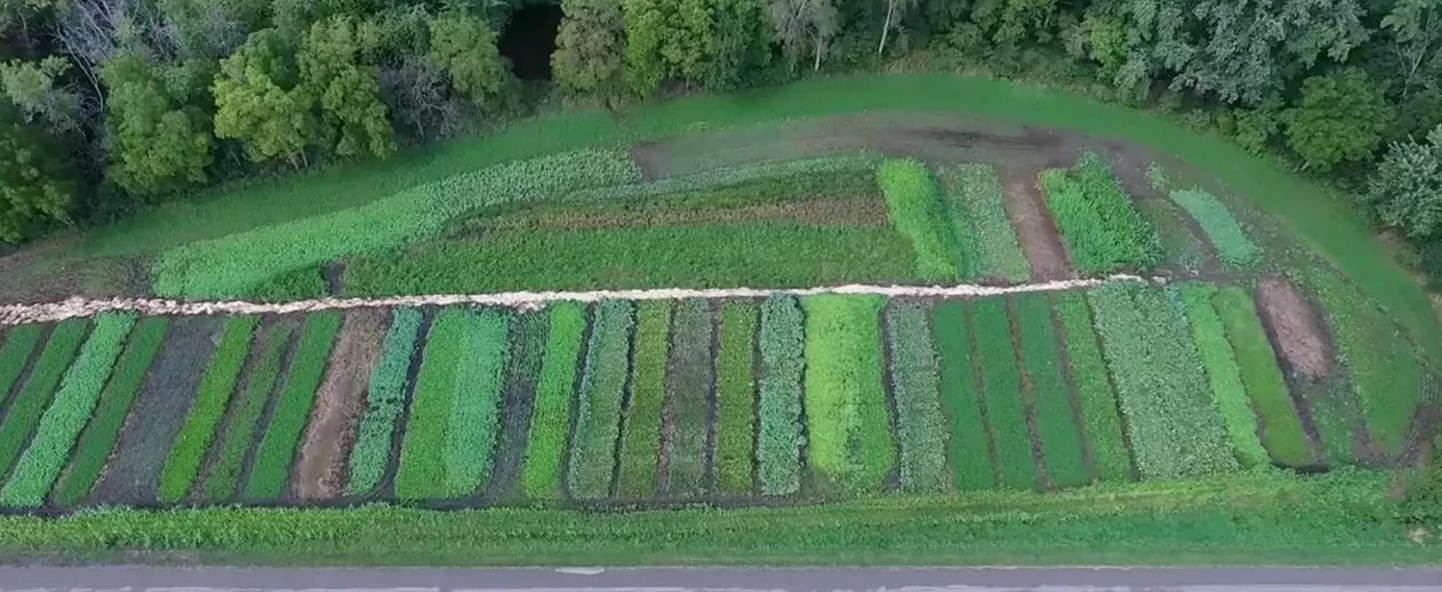Many of us are looking at adding acreage to our food plots, but should first make sure we are doing all we can do with your current acreage. My goal for all of you is to increase your food plot efficiency by 25% or more. No matter if you are an experienced food plotter or beginner, you all can do better. Here are 12 things you can do to increase your growth and nutrition per acre of food plot.

12 TIPS TO MAXIMIZE FOOD PLOT PRODUCTION
1) Learn the effective planting depth of all forages you plant.
Most clovers and brassicas are only needing to be planted 1/8-1/4″ deep. Corn, soybeans and sorghums at least 1″ deep.
2) Proper pre-plant burn down, both timing and effectiveness.
So many people stunt weeds vs completely killing them. You need to use the right tank mix of the product. You need to spray at the correct temperature. Don’t clip then spray, but rather spray actively growing weeds. You also need to set your sprayer pressure to apply more water particles and less volume of water (finer mist).
3) Effective seed to soil contact.
You will see faster germination, less weed competition and a thicker stand by making sure you have good seed to soil contact. Again, make sure your seed when rolled, is at the proper planting depth after rolling.
4) Proper soil pH for what you are planting.
Most people understand that you need a soil pH range typically between 6.0-7.0. What happens when you have a 7.5 pH or 5.5 pH? Do you still plant ladino clover and chicory when you have a 5.0 pH? What do you do when your soil test shows a pH of 7.3 or higher? Do you add sulfur to bring it down to the effective range?
5) Proper fertilization for what you are planting.
I am seeing 90% of the soil samples from across the U.S. being low in potassium. So many people use standard 10-10-10’s, 15-15-15’s, and generic fertilizer recommendations without being aware of the amount of nutrients your food plots are mining from the soil. You should never plant without a soil test. You should always fertilize based on that soil test – which almost always means getting a custom fertilizer blend from your co-op.

6) Split applications of fertilizers.
So many people put the full rate of fertilizer down at planting, but in cases where high rates are required, you can benefit by putting 200-300 lbs at planting and the rest down 4 weeks later. Another thing most do not do is use a fall application of potassium for their perennials. Most perennials need 200-300 lbs of potassium every year to get effective growth. Put down your fall “winterization.”
7) Use of foliar plant foods.
Many progressive crop farmers now use micronutrients and yet very few food plotters do. You will see an increase in growth, plant protein, plant mineral content and plant sugar content by going over the top 1-2 times per growing season. They can cost as little as $5-10 per acre and can give you a 20-40 to 1 return on your dollar for that more nutritious growth per acre.
8) Plant the right seeding rate.
For legumes, many people are planting coated seed with lower germination counts or expired discounted seed. The result is less viable seeds growing per square foot, which increases the potential for weed growth and a thin or thinning stand. For brassicas and winter bulbs we want to have the proper range of seeding to get maximum root development. Seeding too thick will crowd out these forages.
9) Practice plot rotation.
You will see a yield bump of 10-15% by planting corn after legumes. You will become more efficient if you rotate corn and soybeans year after year. You also shouldn’t plant corn or soybeans on the same field more than two years straight because of the exponentially higher chance of having plant disease issues on those fields. Also, planting a spring cover crop before you plant your fall brassicas can help set yourself up for success, especially if there are annual clovers in that plot.
10) Plant forages that produce more tonnage and available nutrients per acre.
Grasses are not a preferred species for deer. Oats and grains produce 25-50% less protein and only 25-30% as much calcium compared to legumes. Learn what forages produce higher nutrient levels. Don’t rely on the wild claims of the industry. Think beyond Ladino Clover.
11) Take forage samples.
Get a historical baseline. Then see what your current nutrient levels are for the forage you’re growing. You can spot trouble areas by comparing your soil samples to plant tissue samples. I can help you if you have questions. Click Here to contact John O’Brion w/Grandpa Ray Outdoors.
12) Plant the correct species for your soil type and location.
If you have shade, plant shade-tolerant forages. If you have sand or sandier grounds, plant species that will handle that better. Every species has its pros and cons. If you have wet ground, know what happens if you plant the typical ladino clover and chicory mixes on that ground. Research what clovers tolerate wet, which tolerate lower pH’s, and which tolerate shade better.
There are many more things to consider, but this is a good start. I have no doubt that everyone can do 25% better. If you have 2 acres of food plots, you now just added another 1/2 acre of forage without planting any more.
DO BETTER BEFORE DOING MORE!!!!








